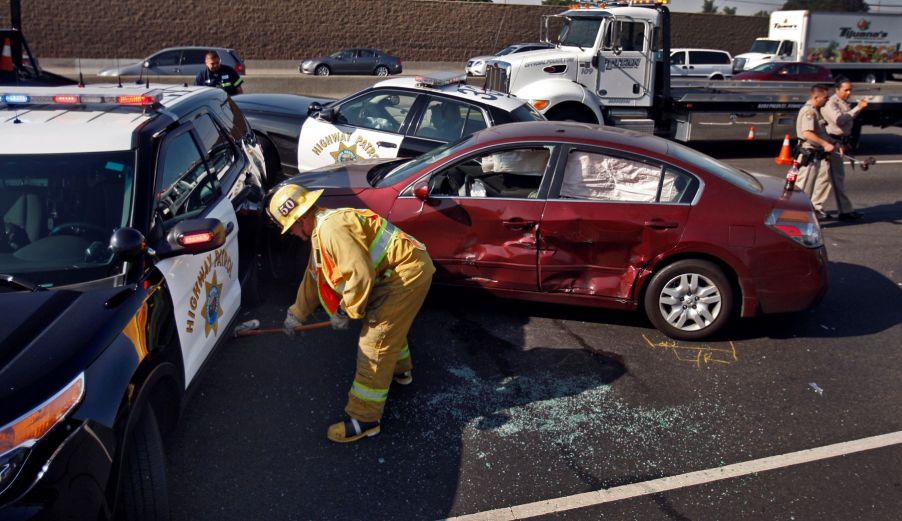
How Does the PIT Maneuver Affect Cars With Electronic Stability Control?
Cars have gotten significant safety upgrades over the years, from Automatic Emergency Braking to Advanced Cruise Control systems. Another feature that we don’t often think about is Electronic Stability Control or ESC. This system helps slow down your vehicle when you lose traction, possibly preventing destructive impacts.
Unfortunately, there are some situations where ESC may prove to be a disadvantage. If you drive too recklessly and end up being pursued by an officer, you could get caught in a PIT maneuver accident. So, how does ESC work, and why does it prove to be so dangerous in police chases?
Why is Electronic Stability Control so important?

Electronic Stability Control was first introduced in the 90s, though it wasn’t mandatory for new vehicles until 2012. It’s a small computer system inside your car, connecting wires to the brakes and wheels. When it detects that there’s a loss in traction, it temporarily increases or decreases the power of your engine. It’s similar to traction control, but this system only alerts you about the fact and can’t limit your vehicle. Both can be deactivated, but doing so puts you at serious risk of a deadly accident.
How does the PIT maneuver affect ESC-equipped vehicles?
The PIT maneuver, also known as the “precision immobilization technique” or “pursuit intervention technique,” is sometimes used by police on fleeing cars. The officer will quickly accelerate alongside the target vehicle, aligning their front wheels with the other car’s back wheels. The officer’s car is bumped into the fleeing vehicle with great force, disorienting the target.
It’s not a complete immobilization technique, but it allows other officers to close in and apprehend the target. Obviously, it can also be a huge safety hazard if the technique is performed on a populated roadway. Studies have shown that it can also be detrimental for vehicles with ESC in recent years.
One test from the Department of Justice documented the maneuver’s effects when tested on both ESC-enabled vehicles and ones without the feature. They found that the target car needed ESC enabled to pull off the most effective spin. These cars accrued extreme damages even when officers performed the maneuver at lower speeds (a recommended 35 mph or below).
The study also concluded that performing the PIT maneuver on ESC-enabled cars can negatively impact the pursuing vehicle. Typically, the officer’s front bumper must be “mated” with the target’s rear bumper during a pursuit. However, ESC can make the target slow down after impact, causing them to hit the officer’s car.
Another study from the FLETC confirmed that these secondary impacts occurred more frequently in that situation. The majority of these accidents happened when the maneuver was performed at speeds above 45 mph.
Drivers used to driving vehicles with ESC were also prone to driving aggressively without worrying about harsh impacts. Therefore, officers are more likely to drive recklessly when switching to an older Crown Victoria. An impaired vehicle with ESC combined with risky maneuvers from a fundamentally less safe vehicle can result in unpredictable accidents.
Other safety concerns regarding the PIT maneuver
Given all this data, skeptics have questioned whether the PIT maneuver is worth practicing. According to Pursuit Response, some of these maneuvers are ineffective in practice due to poor training on the officer’s part. Several other factors can also make these maneuvers unsafe, including the size of each vehicle and the road conditions.
Despite the widespread use of this tactic, the Washington Post reports several accidents and even fatalities due to the PIT maneuver. Up to 74 national police departments contacted by WP realize the risk and have banned the maneuver altogether. Still, other police departments interviewed by the publication allow their officers to perform the maneuver at any speed. To make matters worse, there are very few studies proving the benefits of the PIT maneuver over the dangers.


